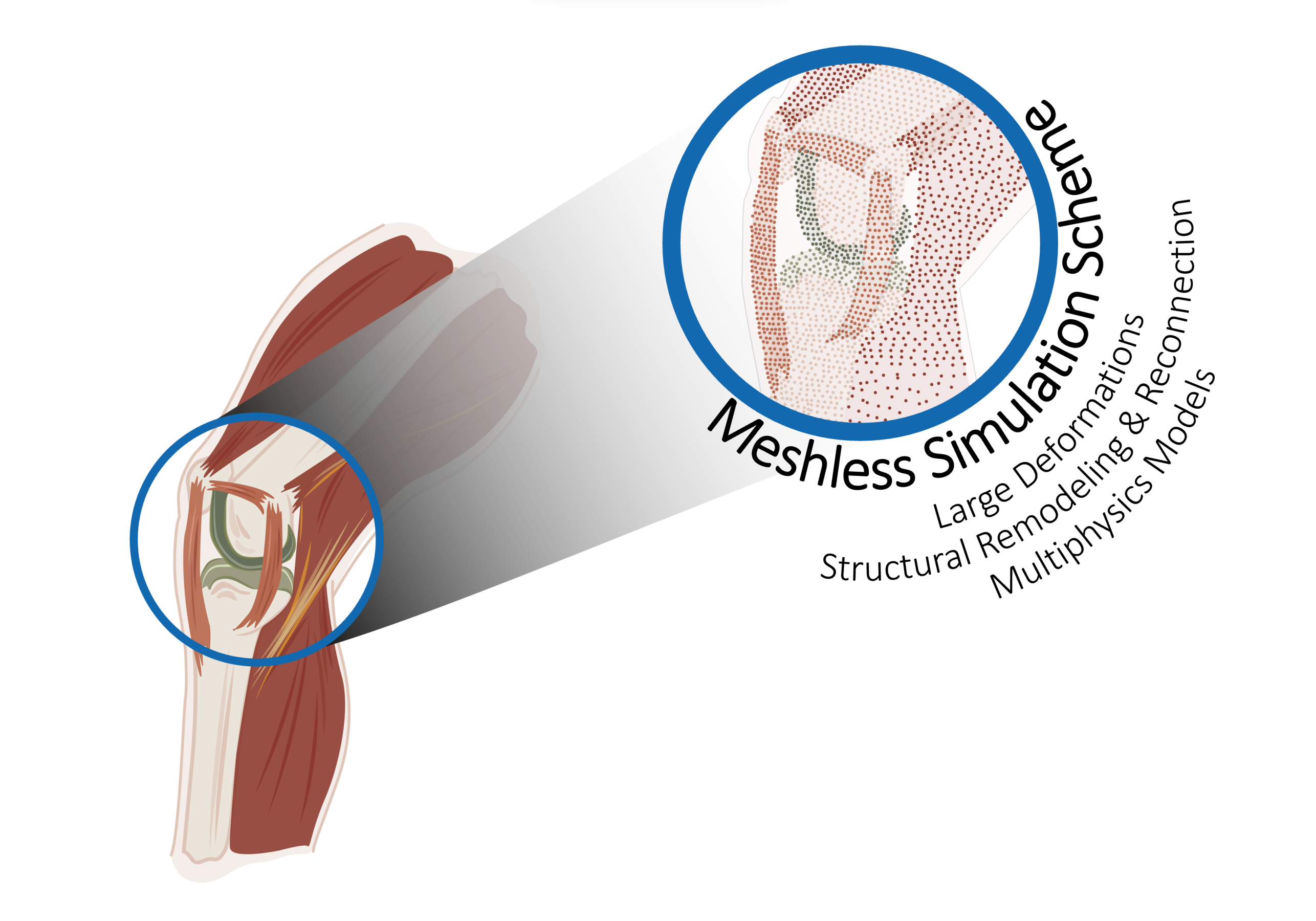A Computational Framework to Simulate Bio-Multiphysics Problems under Large Deformations
PIs:
Prof. Dr. Dennis M. Kochmann, Mechanics & Materials Laboratory, ETH Zurich
Fellow:
Rodrigo Castillo-Acuna, Mechanics & Materials Laboratory, ETH Zurich
Collaborators:
Xiaoyu Zhao and Prof. Dr. Marcy Zenobi-Wong, Tissue Engineering and Biofabrication Laboratory, ETH Zurich
Margherita Bernero and Prof. Dr. Ralph Müller, Laboratory for Bone Biomechanics, ETH Zurich
Ali Kerem Kalkan and Prof. Dr. Ori Bar-Nur, Laboratory of Regenerative and Movement Biology, ETH Zurich
Dr. Alexander E. Ehret and Prof. Dr. Edoardo Mazza, Experimental Continuum Mechanics Group, ETH Zurich

Background
Although soft biological tissues are ubiquitous and essential materials, there is still a wide gap between the existing knowledge of the physical phenomena governing their complex multiphysics behavior and the current state of the art of computational techniques to simulate it. This not only limits present capabilities to use in silico models to deepen our understanding of the bio-chemo-mechanically coupled behavior of these materials and the systems they constitute, but it also limits the development of new technologies from bioengineering to soft robotics.
Goal
The main goal is to develop a multiphysics computational framework to simulate the structural response of the components in a human knee joint-on-chip from its initial stage to its fully-grown form. This requires addressing the challenges related to both the constitutive modeling of the biological tissues involved and the numerical techniques used to solve bioengineering problems involving such models efficiently and accurately. The ultimate goal is to use such a framework towards computationally guiding the design process of the human joint on a chip.
Methodology
A meshless modeling framework, based on maximum-entropy interpolants will be expanded to deal with the multiphysics coupling and to simultaneously solve the governing equations (involving, among others, large-deformation mechanics, diffusion, and electrochemistry). The meshless formulation is ideally suited to capture extreme deformation, growth and damage, it admits coupling various physical phenomena and multiple materials, and it can also be coupled to traditional finite elements. In collaboration with our project partners, reasonable constitutive laws for each type of tissue involved in the application will be sought and implemented within the modeling framework, and validated together with our experimental collaborators. At the end stands a multi-tissue simulation of the global response of the human knee joint-on-chip.
